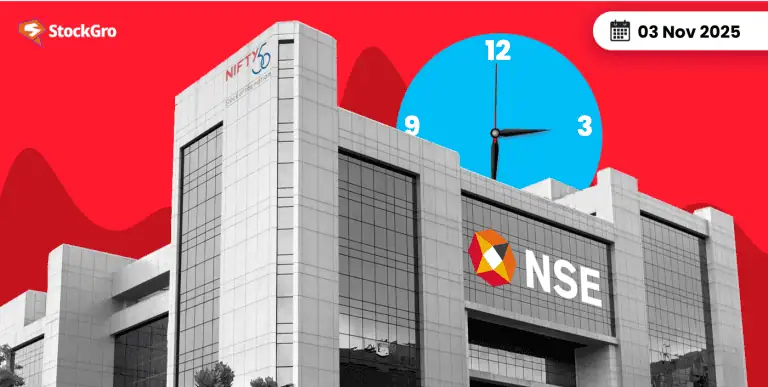
According to a recent study of the Indian market, about 75% of IPOs listed between April 2021 and December 2023 delivered positive returns on their listing day. Yet many investors still run into the problem of not knowing how to earn money from an IPO in a consistent way. While the high number of IPOs giving gains at debut seems promising, the actual path to capturing those gains and avoiding losses can be unclear.
In what follows, we’ll discuss the steps and guidelines on how to earn money from IPOs, covering what to look for, how to evaluate opportunities, and how to manage risks effectively.
How to Earn Money from an IPO?
Initial public offering, or IPO is when a privately held company lists its shares on the stock market for the first time, available for public investors to buy. People can earn money from these shares in two main ways:
- One way is through listing gains, which involves selling the shares shortly after they become available on the stock market, often at a higher price than the initial offering price.
- The other method involves keeping the shares for an extended period, based on belief and thorough analysis of the company’s financial performance, business model, and long-term growth prospects. Benefiting from the company’s expansion and the gradual rise in its stock value over time.
Apart from these two, there are various other ways to earn money, some of which have been discussed in the next sections.
How to Participate in an IPO
The basic requirements and process for participating in IPOs includes the following steps:
- Open a demat and trading account: You require these accounts to apply for IPO shares and to store them electronically once they’re allotted.
- Fund your account: You must have enough money in your linked bank account to pay for the shares you apply for.
- Research the IPO: Look at the company’s details in its official document (called a prospectus or RHP). The prospectus provides detailed insights into the company’s operations, financial performance, and risks.
- Place your bid: Submit your application by selecting the quantity of shares you wish to purchase and the price you’re willing to pay within the given range. In many IPOs, you can bid within a price range or choose the “cut-off price,” which means you agree to pay whatever price is finalised.
- Use ASBA: You will apply using a method called ASBA (Application Supported by Blocked Amount). This means the money for your application is blocked in your bank account but not taken out unless you are given shares.
- Wait for allotment: After the IPO closes, shares are assigned to applicants. When an IPO receives high demand, investors may receive only a portion of the shares they requested, or sometimes no allotment at all.
- Listing: After the allotment process, the company’s shares officially start trading on the stock exchange on a predetermined listing date.
Investment Strategies for IPOs
The main IPO investment strategies are as follows:
- Participate for listing gain: This is a short-term strategy. The goal is to sell the shares on the day they list or very soon after. This plan relies on high demand and market excitement causing the price to “pop” on the first day. The investor is not focused on the company’s long-term future.
- Adopt a long-term holding approach: One strategy is to invest in IPO shares with the plan to retain them over an extended period, allowing value to grow over time. This approach is based on a belief in the company’s fundamental strength, its business model, and its potential for future growth. The investor is less concerned with the first-day price movement and more focused on the company’s performance over time.
- Use valuation check technique: Review company’s fundamentals to understand its financial health (like its sales and profits), what it does, who its competitors are, and the industry it operates in.
- Combine a support/resistance method for post-listing performance: One simple technique suggests drawing a line at the first price print and watching how the stock moves relative to that level.
Risks Involved in IPO Investments
While reviewing all IPO risks and benefits, it is possible to lose money, and investors should be aware of challenges such as:
- Listing loss: There is no guarantee that a stock’s price will go up on the first day. It could open at a price lower than the IPO offer price, resulting in an immediate loss for investors who sell.
- High price fluctuations: IPO stocks can be very “bouncy,” with their prices swinging up and down wildly in the first few days and weeks of trading. This can be stressful and makes it hard to sell at a good price.
- Overhyped valuations: Sometimes, excitement and marketing can push the IPO price to a level that is too high and not supported by the company’s actual business performance. This makes it difficult for the stock to perform well in the long run.
- Lock-in period expiry: Early stakeholders, such as founders or employees, are typically restricted by a lock-in period that prevents them from selling their shares for a set duration after listing. When this period ends, a large supply of shares can suddenly hit the market, which can push the price down.
- Limited track record: Many companies going public are young or in growing industries. They may not have a long history of profits or a proven business model, making it harder to predict their future success.
- No guarantee of allotment: In a popular IPO, so many people may apply that you are not given any shares. This is called oversubscription. You might also receive only a small portion of the shares you applied for.
Real-World Examples of IPO Success
As discussed above, IPOs do come with certain risks, but there are also strong examples of companies that delivered impressive returns after listing.
- Quality Power Electrical Equipments Ltd
Launched its IPO at an issue price of ₹425 per share. On its listing day, the stock opened near ₹800, giving a listing gain of around 88%. Over the next few months, it continued to perform well, reaching about ₹909, marking a 114% rise from its issue price. This outcome reflected not only listing-day enthusiasm but also sustained investor interest supported by the company’s financial stability, sector growth, and consistent demand for its products.
Quality Power Electrical’s IPO demonstrated how a well-positioned company with sound financials can generate both quick listing gains and sustained shareholder value in the months following the IPO.
- LG Electronics India Ltd
Conducted a IPO worth ₹11,607 crore, fully subscribed in just 6.5 hours, marking the fastest take-up for a major IPO in 17 years. The shares listed at ₹1,710, around 50% higher than the upper price band of ₹1,140, with intraday spikes reaching near ₹1,736, a surge of about 50%.
The company’s market valuation to over $13 billion, surpassing its parent company’s valuation and becoming one of India’s most sought-after IPOs. The success was attributed to strong domestic investor participation, high demand, and the company’s leading position in consumer electronics, exemplifying how large, well-received IPOs can transform market dynamics.
Advanced Strategies for Maximising Returns
Beyond the basics, some investors use more detailed tactics to analyse an IPO. These advanced strategies for maximising IPO returns are:
- Applying in the right category: IPOs are often split into categories, such as for retail investors (small applications), HNIs (large applications), and employees. Understanding these categories can be part of a strategy. For example, applying as a retail investor may have a different chance of allotment than as an HNI.
- Partial profit booking: If the stock lists at a much higher price, some investors choose to sell only a part of their shares. This approach helps secure partial gains while keeping a portion of the holdings invested for possible future appreciation.
- Studying the grey market premium (GMP): The grey market is an unofficial market where people bid on IPO shares before they are listed. The premium represents the gap between the anticipated market listing price and the original offer price of the IPO. Although unofficial, many investors view the GMP as a rough measure of how the market perceives demand for the upcoming issue.
- Use exit planning: set target sell-prices or decide in advance whether you are aiming for short-term listing gain or long-term hold, and act accordingly when those targets are reached.
- Multiple application strategy: This involves placing applications from different demat accounts, such as those belonging to various family members. The goal is to improve the probability of receiving shares in an IPO that is expected to be heavily oversubscribed and where allotment is not guaranteed.
- Stag strategy: A “stag” is an investor who applies for an IPO only to sell immediately for listing gains. This involves assessing short-term demand rather than the company’s long-term value.
- Sector rotation: This means focusing on companies within specific industries. Investors might give more attention to IPOs in sectors (like technology, green energy, or healthcare) that are currently favored by the market or appear to have strong future growth potential.
Market Comparisons: India vs. US IPOs
The IPO market varies significantly between India and the United States, with differences in scale, investor mix, and sector focus. The following table displays the core comparisons between the two markets for 2025:
| Feature | India IPO market | US IPO market |
| Number of IPOs | Around 100 IPOs (first 6 months of 2025) | Approximately 181 IPOs (YTD of Oct 30, 2025) |
| Capital raised | About $4.6 billion | About $32.3 billion (YTD as of Oct 30, 2025) |
| Market share globally (first-half of 2025) | Accounts for 8% of global IPO proceeds | Contributes approximately 28% of the global IPO proceeds |
| Average IPO size | Smaller compared to US, with few mega IPOs | Includes larger megadeals raising over $1 billion each |
| Investor participation | High retail investor interest, growing institutional base | Dominated by institutional investors with active retail base |
| Listing venues | NSE, BSE (main Indian exchanges) | NYSE, NASDAQ (Leading US stock exchanges) |
Conclusion
In summary, figuring out how to earn money from an IPO is not just about applying for shares. It is a process of evaluating the company, choosing a specific strategy, and accepting the associated risks. This guide has provided the framework, from participation methods to advanced tactics, to help you make more informed decisions.
FAQs
You can earn money from IPOs by selling shares at a higher price shortly after listing, benefiting from listing gains, or by holding shares long-term to benefit from company growth and increasing stock value. Dividends may also provide returns.
Yes, IPOs can offer quick profits through listing gains if the stock price surges on the debut day. However, profits are not guaranteed, and prices can also fall, so timing and market momentum are critical in short-term IPO trading.
Risks include price volatility, limited financial history, potential overvaluation, oversubscription leading to partial allotment, and possibility of listing below issue price. Lock-in periods and unpredictable market sentiment also add to IPO investment uncertainty.
Benefits include early access to promising companies at issue price, potential for substantial gains, supporting company growth by providing fresh capital, and participation in exciting market opportunities often unavailable through regular stock market trades.
To participate, open a demat and trading account, fund it, research the company’s prospectus, place your bid within the price band (or at cut-off), apply using ASBA (which blocks funds without immediate deduction), and await allotment and listing.


